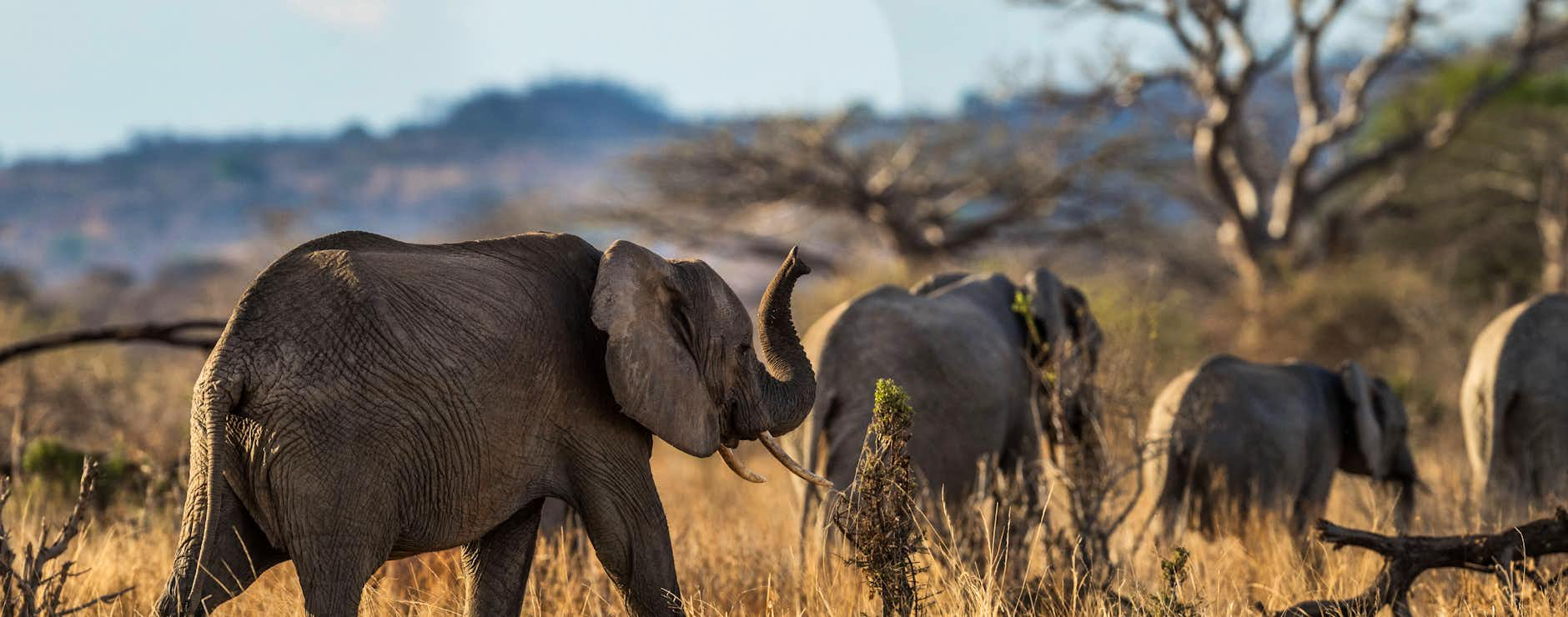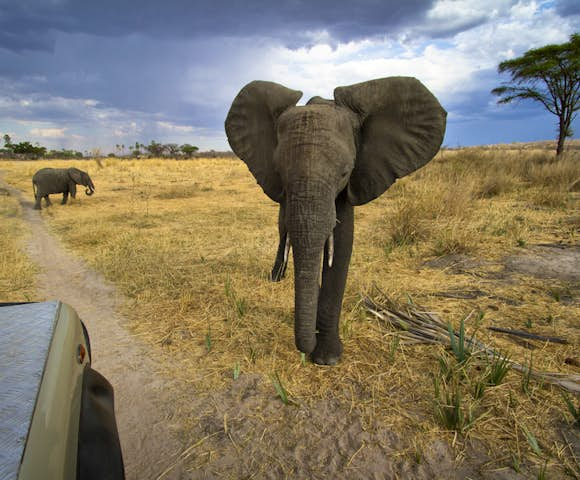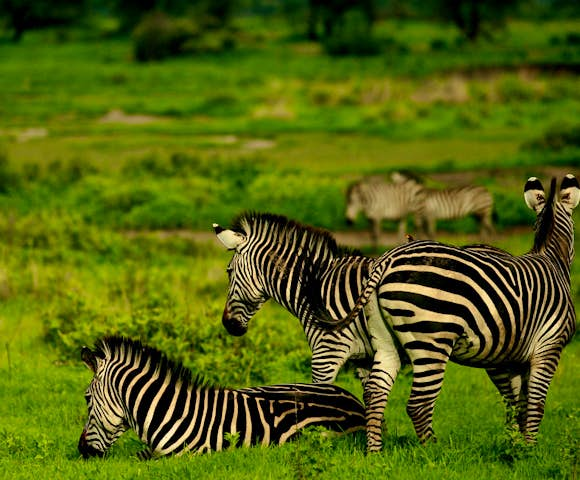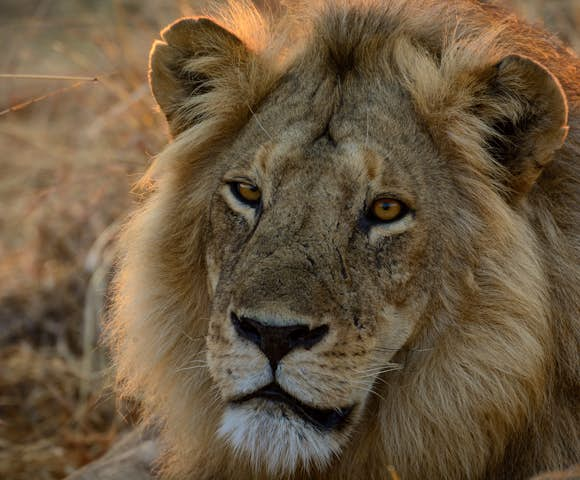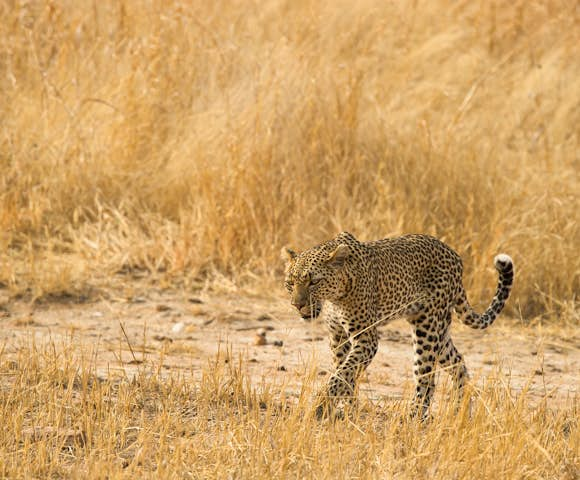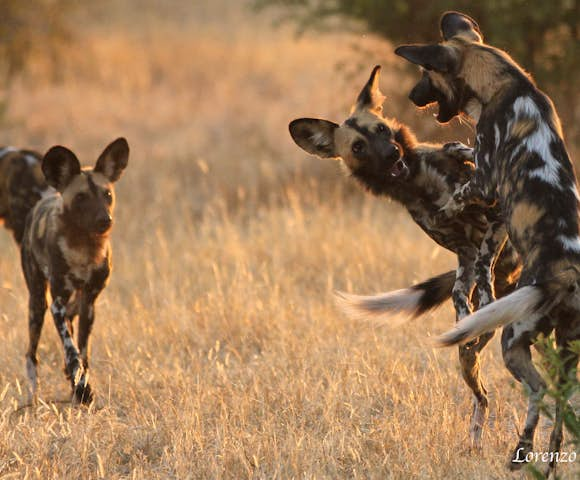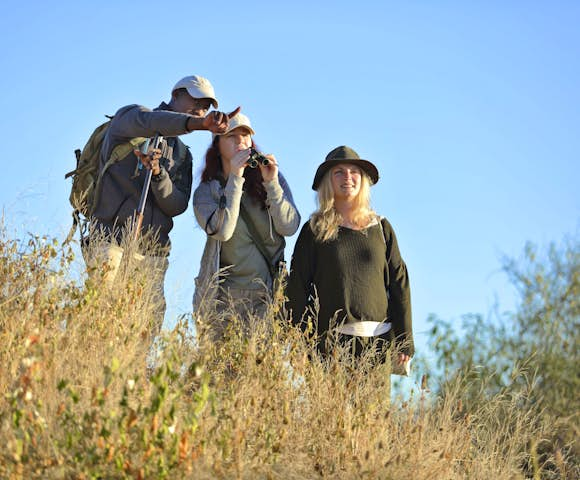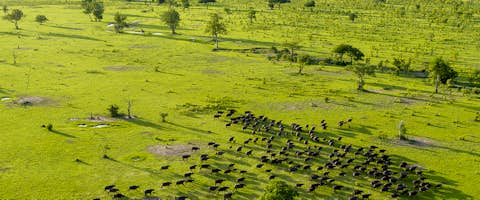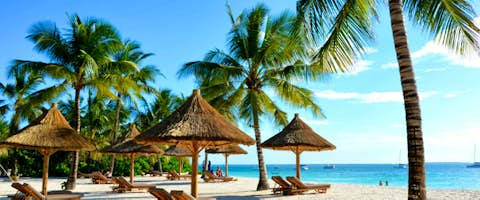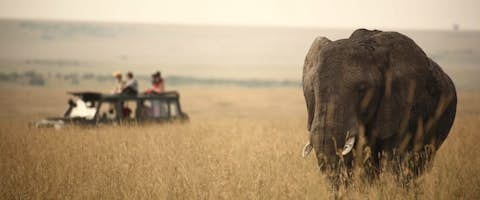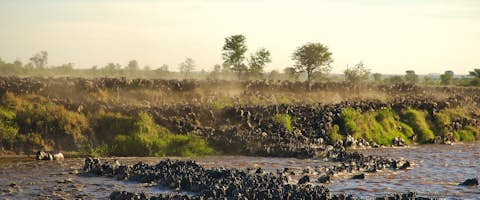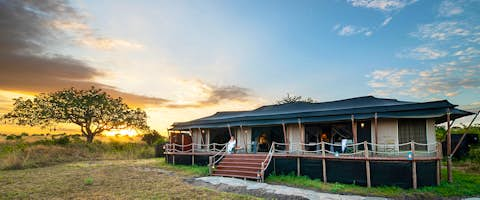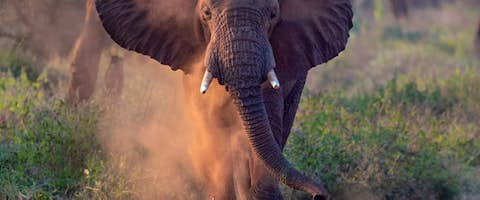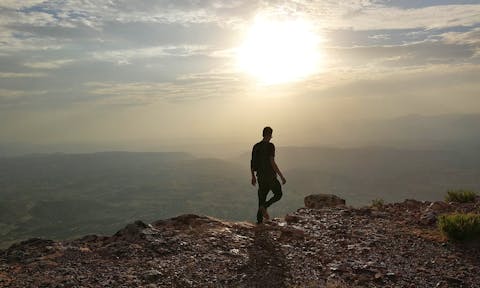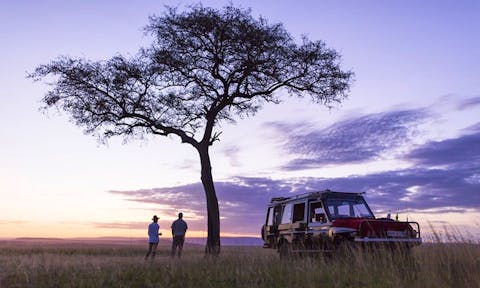Ruaha National Park, at a glance
Located in central to southern Tanzania, Ruaha National Park is around 130km west of Iringa. Covering an area of 20,226km², Ruaha National Park is the largest protected area in Tanzania and East Africa.
The park derives its name from the Great Ruaha River which flows through the south-eastern section of the park and attracts a broad range of wildlife.
Ruaha is an integral part of the Rungwa-Kizigo-Muhesi ecosystem. The ecosystem spans across an area of 45,000km², and it includes the Rungwa Game Reserve, the Kizigo and Muhesi Game Reserves, and the Mbomipa Wildlife Management Area.
The Rungwa-Kizigo-Muhesi ecosystem fuses the best of Southern and East African nature.
In 1910, the German colonial regime created the Saba Game Reserve, and the British colonial authorities renamed it as the Rungwa Game Reserve in 1946. In 1964, the southern part of the reserve was elevated to national park status.
Ruaha has a stunning and diverse landscape with a vast savannah, a river which attracts a plethora of wildlife, and mountains in the south and west. Ruaha is home to rare species, including wild dogs, cheetahs, and leopards.
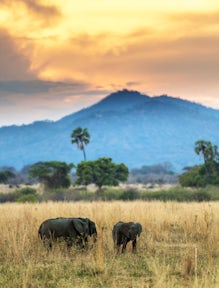
Explore Ruaha on these trips
The tours below showcase just some of what is possible. Use these itineraries as starting points, or to draw inspiration. Then get in touch, and let our expert team help craft the perfect itinerary for you.

Brilliant says
Although Ruaha is not Tanzania’s most visited national park, we believe that it is the perfect safari destination for any adventurer who wants to veer from the well-trodden path and experience the wild side of Tanzania.
Where does Ruaha National Park fit into my Tanzanian adventure?
Ruaha is often overshadowed by its bigger sisters on Tanzania's northern safari circuit. This - in many ways - is one of its biggest strengths.
At Ruaha, you can experience Tanzania's wilderness without the drone of surrounding safari engines. Its remoteness - and utter vastness - is what makes it so compelling. Ruaha is part of Tanzania's southern safari circuit, often combined with Selous.
Although Ruaha does not contain rhinos, it is home to the largest concentration of elephants in Tanzania, lions, and even crocodiles on the shores of the Great Ruaha River.
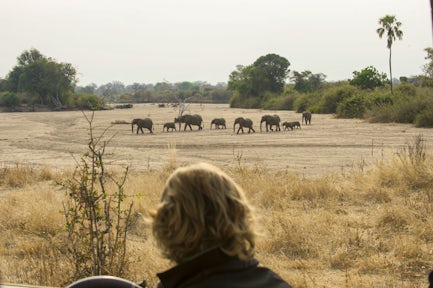
Getting to Ruaha National Park
Ruaha’s remote location means that it is difficult to access, but the long journey is rewarded ten times over by the secluded safari paradise that awaits. The Southern Safari Circuit is less popular, so flight connections are not as frequent.
You can reach Ruaha via plane or car, although we recommend the former for ease and comfort. If you do decide to drive, you'll get a wonderful insight into rural Tanzanian life, and you can enjoy the changing landscapes that never fail to impress. If you decide to stop over in Morogoro or Iringa, you can even get a taste of traditional village life.
Ruaha is 625 km away from Dar es Salaam and the road journey takes around 9 hours. You can also drive from Iringa which is only 130 km away.
By plane, the journey is a lot shorter. There are frequent flights from Dar es Salaam, Arusha, the Serengeti, Kigoma, and Dodoma to the local airstrips, Msembe and Jongomero.
Coastal Aviation and Safari Airlink operate flights from Dar es Salaam. Private flights can be booked on request.
If you have booked your adventure with us, all transport will be arranged for you.
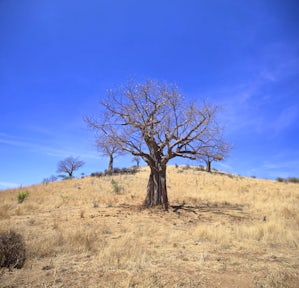
When to visit Ruaha National Park?
Like most other Tanzanian national parks, it is best to visit Ruaha during the long dry season from June to October. It is relatively cool during this period compared to the hot dry season from mid-December to mid-March.
The dry season also provides great conditions for wildlife viewing because animals are drawn to the dwindling water sources and the grass is too short for them to hide.
For bird enthusiasts, the European winter months (December to April) are the best time to visit as migratory birds make their way down to Tanzania. Some lodges close in the long-wet season (March-May), so you will need to be flexible when you are finding your accommodation.
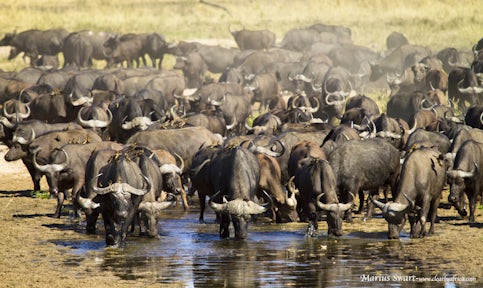
Safaris at Ruaha
Morning game drives and walking safaris are the most popular activities at Ruaha. Night drives are not permitted.
Walking safaris with an experienced ranger allow you to get even closer to the wildlife. There's nothing quite like getting within metres of a 6-tonne elephant.
Safaris at Ruaha offer great wildlife photography opportunities. Visitor numbers in the park are much lower than in the Serengeti or Ngorongoro, which means you can feel like you have the park all to yourself.
Hot air balloon trips are another great way to discover Ruaha National Park, and they offer a unique perspective of the wilderness. These trips are quite expensive (around US$550 per person), but soaring above the wild plains of East Africa is an experience few can put claim to, and is worth every penny.
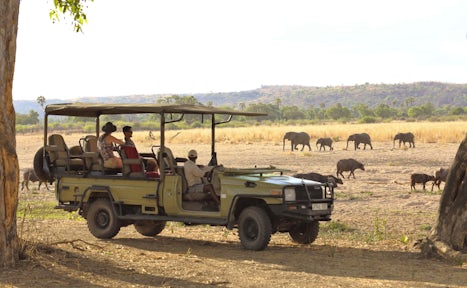
Wildlife at Ruaha
Ruaha has the largest concentration of elephants in East Africa with a population of around 10,000 of these gentle giants. Ruaha is also home to 10% of global lion populations.
You also have a chance of seeing leopards, cheetahs, zebras, elands, giraffes, impalas, bat-eared foxes, snakes, crocodiles, and jackals.
Ruaha’s unique position on the verge of Southern Africa means that it is home to species from Southern and Eastern Africa. The greater and lesser kudu can both be found at Ruaha. Whilst the greater kudu is traditionally found in Southern Africa, the lesser kudu is found in East Africa.
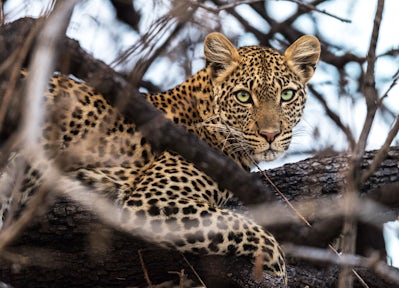
Ruaha is home to dozens of rare species, including the sable and roan antelopes.
Cheetahs and leopards are difficult to spot in most places, but they are often sighted as they pursue their prey in the open plains of Ruaha. The wild dog is endangered worldwide, but around 100 wild dogs live in the park.
Ruaha is a birdwatcher’s paradise and 571 bird species have been sighted at the park. Ruaha also has beautiful landscapes which are dotted with acacias, baobabs, and over 1,650 plant species.
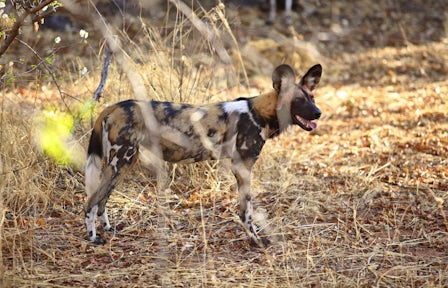
Cultural Tourism
Take a break from game drives and experience some cultural tourism in Iringa, one of Tanzania’s largest cities.
Iringa has a fascinating history, and the legacy of its German colonial architecture is still visible. Ruaha has also been shaped by the influences of more recent Tanzanian architecture, giving the city an authentic feel of Tanzanian town life.
Iringa is a great place to buy souvenirs, try local street food, and learn about Tanzanian culture with the help of a local guide. The town has fascinating ancient history and there is spectacular rock art at Igeleke which dates to the Iron Age. It has been established as a site of protected cultural heritage.
The Isimila Stone Age Site dates back even further to 1.5 million to 200,000 years ago. Both sites provide fascinating insights into pre-historic Tanzania, and they are captivating alternatives to exhibits about Tanzania’s colonial history.
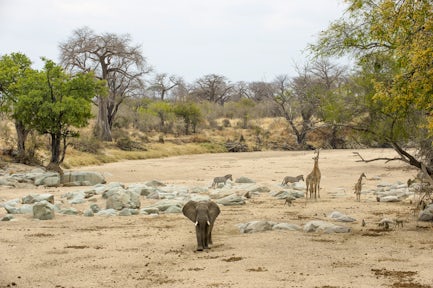
Accommodation in Ruaha National Park
Luxury lodges
Jabali Ridge: Managed by Asilia Africa, this luxury lodge offers comfortable, stylish accommodation. Overlooking the Mwagusi River, the lodge offers great views of elephant and buffalo during the dry season. Jabali offers 8 suites, including Jabali Private House for travellers who value their own space. The lodge also provides hammocks, an infinity pool, and a spa which offers hot stone massages.
Jongomero Camp: Seamlessly blending into its stunning surroundings, this camp is situated on the banks of the seasonal Jongomero River, an important water source for a plethora of wildlife. Its bar and restaurant are situated on an open wood terrace and their furniture is crafted from reclaimed dhow wood.
Kichaka Expeditions: Choose between 3 eco-friendly camps which combine a rustic feel with luxury. Kichaka’s camps are located within the heart of the wilderness and Kichaka prides itself on the remote locations of its camps. Kichaka Frontier is the main base of Kichaka Expeditions.
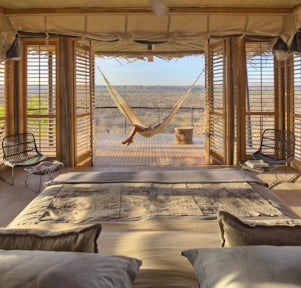
Mid-range lodges
Kwihala Camp: Also managed by Asilia Africa, this solar-powered camp offers 6 spacious tents. The expedition-style camp is just a 45-minute drive from Msembe Airstrip. An evening tipple next to the campfire is the perfect way to round off a day of adventures at Ruaha.
Nomad Kigelia Camp: A small bush camp in the east of Ruaha which offers 6 spacious tents, a twin-roomed family tent, and a choice between indoor and outdoor dining. A bush breakfast is available, and bush walks are an optional extra.
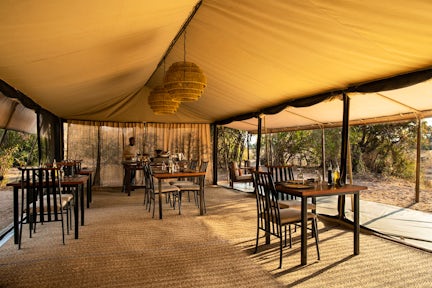
Ruaha River Lodge: Situated on a bend of the Great Ruaha River, this lodge has a fantastic location. The lodge offers 24 stone-built chalets which all have their own private veranda that offers excellent views of Ruaha’s wildlife. The dining area is split between 2 locations: a riverside banda and a hilltop banda which offers sweeping views across the Great Ruaha River.
Mwagusi Camp: This camp was built in 1987, making it the oldest camp in the park. Almost all of the camp is built from natural materials, including grass thatch, timber, and driftwood. Each banda features a large spacious tent which is pitched under a thatched roof. The camp supports the Foxes’ Community and Wildlife Conservation Trust (FCWCT), a grassroots organisation that has undertaken crucial conservation work in the surrounding area.
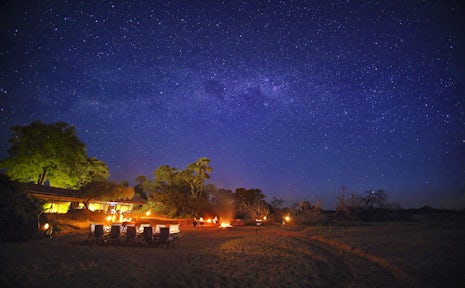
Budget lodges
Mdonya Old River Camp: This budget camp offers 12 Meru-style tents. The camp is functional, but comfortable, and it prides itself on sticking to safari basics such as showers under the open sky.
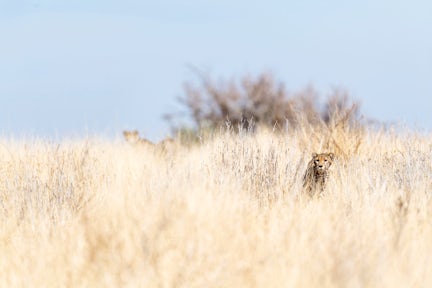
Costs
Ruaha’s remote location means that transport costs are high, and flights can cost up to US$380.
Accommodation rates are in line with the prices at most other national parks in Tanzania.
Like all TANAPA-owned national parks, visitors are required to pay entry and conservation fees. At the time of writing, these cost US$30 per non-Tanzanian adult and US$40 per foreign-registered car. However, they frequently change.
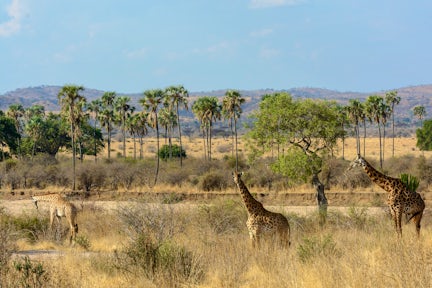
Ruaha National Park
-
Where is Ruaha National Park located?
Located in central to southern Tanzania, Ruaha National Park is around 130km west of Iringa. Covering an area of 20,226km², Ruaha National Park is the largest protected area in Tanzania and East Africa.
-
Where should I stay in Ruaha National Park?
Until recently, Ruaha National Park only had a few basic lodges. However, the range of accommodation has increased in recent years. Ruaha has a great balance of luxury and modest accommodation.
-
How do you get to Ruaha National Park?
You can reach Ruaha via plane or car, although we recommend the former for ease and comfort. If you do decide to drive, you can take in the landscapes of rural Tanzania and see traditional housing during the journey. If you decide to stop over in Morogoro or Iringa, you can even get a taste of traditional village life.
Ruaha is 625 km away from Dar es Salaam and the road journey takes around 9 hours. You can also drive from Iringa which is only 130 km away.
By plane, the journey is a lot shorter. There are frequent flights from Dar es Salaam, Arusha, the Serengeti, Kigoma, and Dodoma to the local airstrips, Msembe and Jongomero. Coastal Aviation and Safari Airlink operate flights from Dar es Salaam. Private flights can be booked on request.
-
Which is the biggest national game park in East Africa?
Ruaha National Park is the biggest national game park in East Africa, and it covers an area of 20,226km². Ruaha is an integral part of the Rungwa-Kizigo-Muhesi ecosystem.
The ecosystem spans across an area of 45,000km², and it includes the Rungwa Game Reserve, the Kizigo and Muhesi Game Reserves, and the Mbomipa Wildlife Management Area.
The Rungwa-Kizigo-Muhesi ecosystem fuses the best of Southern and East African nature.
Popular Trips to Tanzania
The tours below showcase just some of what is possible. Use these itineraries as starting points, or to draw inspiration. Then get in touch, and let our expert team help craft the perfect itinerary for you.
Ready to plan your African adventure?
Listen
We'll spend some time listening to your aspirations, then discuss the kind of experience that might suit you.
Match
Next we'll discuss the options, shortlist the best trips for you and present you our impartial recommendations.
Reserve
We'll place a 24 hour hold on your preferred option - without obligation - whilst we talk through the details.
Whatever your budget, group size, length of stay, preferred activity or appetite for adventure, we can help.

